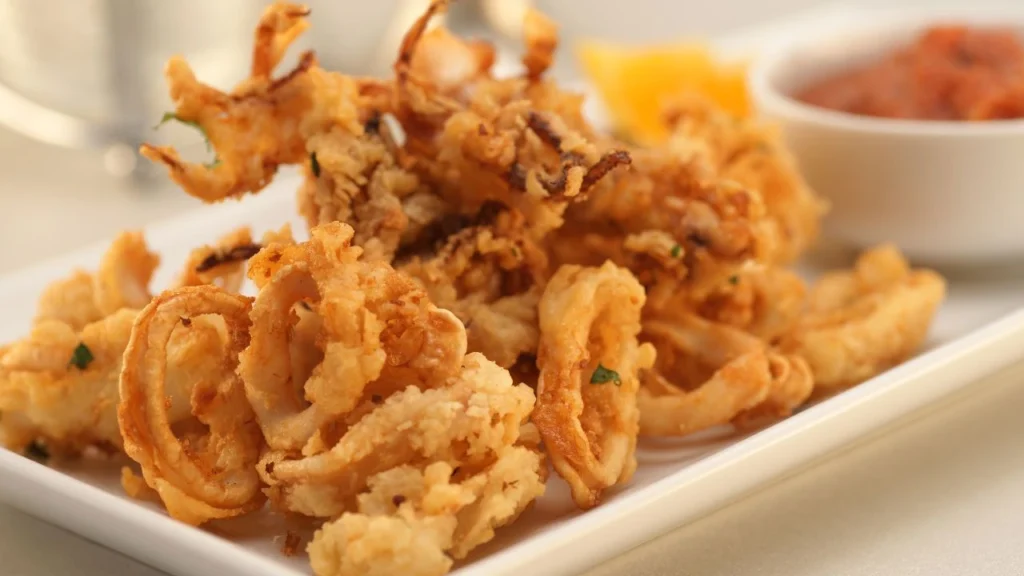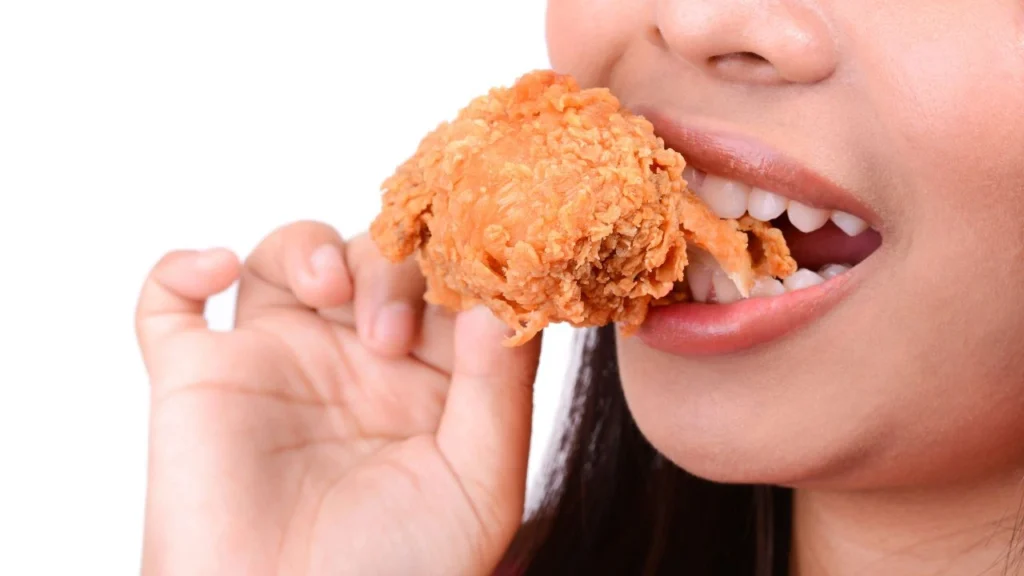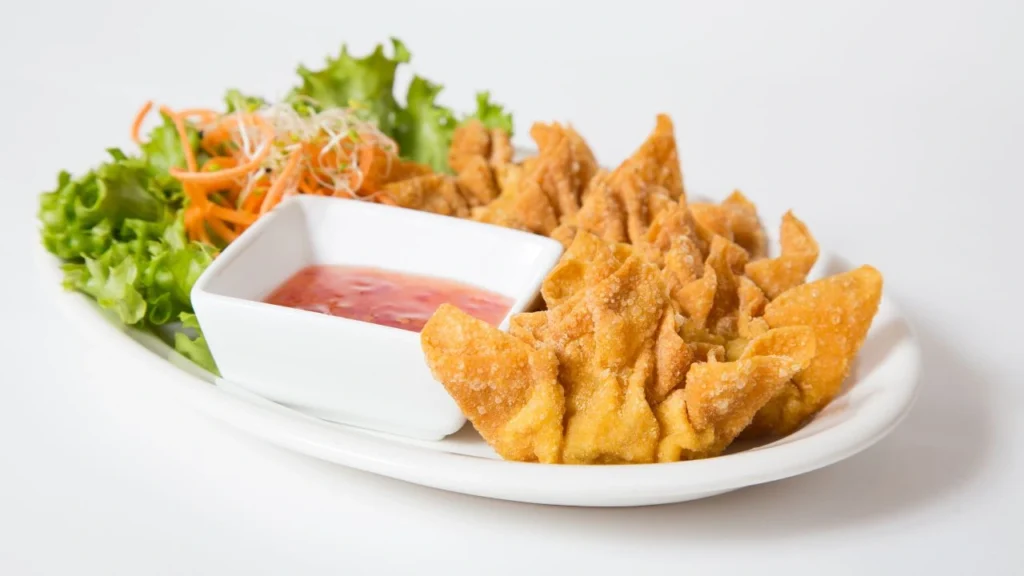When considering food quality and cutting costs, I often turn to Frylow’s innovative solution.
Frylow extends the life of frying oil by up to 50%, significantly reducing consumption while improving the flavor and consistency of fried foods.
This technology not only stabilizes the oil to prevent rapid degradation but also brings remarkable efficiency to kitchen operations.
In my experience as a chef, finding ways to save while maintaining quality is crucial.
Frylow does just that by helping maintain consistent frying quality without needing frequent oil changes, which is a game-changer for managing kitchen expenses.
Its intuitive installation process and eco-friendly design make it an attractive option for any restaurant looking to optimize their culinary offerings.
Overview Of Frylow Technology
I understand the importance of maintaining the quality and consistency of fried foods in a busy kitchen.
Frylow technology is a game-changer for any restaurant involved in frying operations. This patented technology utilizes advanced ceramic devices to enhance the longevity and quality of cooking oil.
One of the key features I appreciate about Frylow is its ability to extend the life of restaurant frying oil.
The technology relies on photo catalytic properties, incorporating seven NSF-approved metals. This unique combination stabilizes the oil, allowing it to withstand high heat and repeated use efficiently.
Here’s how Frylow technology benefits cooking operations:
- Reduced Oil Absorption: Fried foods absorb less oil, making them lighter and healthier.
- Lower Caloric Content: By decreasing oil absorption, the food has fewer calories.
- Improved Flavor: The natural flavors of the ingredients come through more vividly, offering diners a better taste experience.
Using Frylow is quite straightforward. It is designed to work seamlessly with all commercial deep fryers, maintaining the oil’s quality while minimizing the frequency of oil changes.
Savings in oil costs can reach up to 50%, as mentioned by Frylow.
Additionally, Frylow allows cooking at lower temperatures, which can lead to reduced energy costs.
By lowering the temperature by approximately 10%, I can enhance both the efficiency and the sustainability of my kitchen operations. This makes Frylow an invaluable tool in my pursuit of culinary excellence.
Importance Of Taste And Texture In Fried Foods

As an expert restaurateur and chef, I know that the success of fried foods in any restaurant hinges on their taste and texture. These elements create an unforgettable dining experience that keeps customers coming back.
Flavor: The hallmark of exceptional fried food is its deep, rich flavor. This comes from the Maillard reaction, which occurs when heat transforms proteins and sugars, developing complex aromas and flavors.
In my experience, choosing the right oil and maintaining optimal frying temperatures are key to enhancing flavor.
Using high-quality oil can make a noticeable difference, ensuring that the flavors remain crisp and clean instead of greasy.
Texture: Equally important is a pleasing texture that balances a crispy exterior with a tender interior.
Achieving the right crunch elevates the sensory satisfaction of dishes like fried chicken or tempura.
Taste and Pairing
Taste plays a vital role in the overall appeal of fried foods. Balancing sweet, salty, and savory notes can elevate the dining experience.
Complementing fried foods with appropriate sauces and side dishes can enhance the overall taste.
Quick Tips
- Always monitor oil temperature to maintain ideal conditions for flavor development.
- Experiment with different batters to find the perfect crunch.
- Pair with sauces to complement the taste profile.
Understanding these elements equips you with the knowledge to craft outstanding fried products that customers will love.
Understanding Frylow
Frylow is a photo-catalytic ceramic device that extends the life of frying oil and enhances food quality. Its unique features offer an easy-to-install solution for restaurant owners and chefs, providing a cost-effective way to maintain high standards in fried dishes.
What Is Frylow?
Frylow is an innovative technology designed with the restaurant industry in mind. Developed through Japanese manufacturing expertise, this device uses photo catalytic technology to improve the performance of frying oils.
It’s perfect for chefs who want to ensure their fried foods are consistently crisp and flavorful.
By integrating the Frylow into existing fryers, it helps maintain oil quality, reducing the need for frequent oil changes and thus cutting costs significantly.
Description And Purpose
The Frylow device works by enhancing the thermal conductivity of cooking oils, offering a dual benefit.
Firstly, it helps fry foods evenly and efficiently.
Secondly, it extends the usable life of the oil by slowing oxidation, meaning fewer oil changes are needed.
This not only leads to financial savings but also contributes to a more sustainable kitchen environment.
The primary purpose of Frylow is to supercharge your fry oil, resulting in better fried food without the usual downsides of excessive oil usage.
Key Components And Features
A crucial component of Frylow is its photo-catalytic ceramic technology.
This setup involves a ceramic device infused with precious metals that trigger a unique electron-based process. This process stabilizes oil under high heat, optimizing heat transfer and reducing oil absorption.
Using Frylow ensures that your fried foods maintain their natural flavor while boasting a lighter texture.
The device is straightforward to implement, requiring minimal changes to existing fryer setups.
Improving The Taste Of Fried Foods

I know that enhancing the taste of fried foods involves understanding the intricate processes affecting flavor.
Using Frylow, we can improve taste by enhancing flavor profiles, reducing off-flavors, and benefiting from different oils and foods.
Enhanced Flavor Profiles
When using Frylow, fried foods retain more of their natural flavor.
This device utilizes photocatalytic reduction to alter the frying environment, helping to maintain oil quality.
By slowing the oxidization process, we can prevent the oil from breaking down too quickly. This leads to a fresher taste, with original flavors coming through more prominently.
Frylow allows for a reduction in cooking temperature, which can further enhance flavor by preventing the burning or overcooking of delicate foods.
How Frylow Affects Flavor
Frylow affects the flavor by acting as a catalyst, minimizing the absorption of oil into food.
This technology allows electrons to be added back into the oil, effectively repelling oil molecules from penetrating deep into the fried food.
With less oil saturation, the dish remains crisp and flavorful.
It’s a balance between achieving the perfect golden tone and preserving the moistness inside. This reduces the greasiness and lets the natural savory notes shine through.
Examples Of Improved Taste In Various Foods
With Frylow, different types of fried food experience an elevated taste.
For instance, french fries taste fresher and possess a crisp exterior while remaining fluffy inside.
Chicken wings maintain their seasons’ full-bodied essence while achieving an exquisite crunch.
Frylow’s impact on fried calamari is notable, as they come out tender with a light crunch, bursting with flavor.
Even sweet potato fries, often more challenging to crisp, benefit significantly from this technology.
Reduction Of Off-Flavors
A primary concern in frying is the development of off-flavors caused by the degradation of oil.
Frylow minimizes these by employing a photocatalytic process, which stabilizes the cooking oil.
This stabilization prevents the formation of unpleasant tastes that occur when oil breaks down during repeated use.
A consistent frying environment ensures that unwanted flavors don’t mask the natural goodness of the foods.
Mechanisms For Reducing Bad Odors And Flavors
Odors and off-flavors in fried foods usually result from oxidized oils and accumulated food particles.
Frylow combats this by preventing rapid oxidation.
The catalyst mechanism involved helps to maintain a cleaner oil, which in turn, prevents bad odors from developing.
By reducing these particles, the kitchen remains smelling fresh, without lingering heavy oil scents that might otherwise affect the dining experience.
Benefits Of Different Types Of Oils And Foods
Different oils interact uniquely with Frylow’s technology.
For example, oils with higher smoke points, like canola or peanut oil, often perform better as they withstand temperatures without burning.
Frylow enhances these properties, making them more efficient for varied applications.
Using the right oil enhances foods, such as crispy fried chicken or perfectly browned onion rings, providing restaurant owners a way to deliver quality while managing costs effectively.
By selecting and maintaining the right type of oil, restaurants can provide consistently delicious meals on every plate.
Improving The Texture Of Fried Foods

Achieving the perfect texture in fried foods involves balancing several factors, including temperature and cooking method.
Using Frylow, we can significantly enhance crispy textures while maintaining consistency across batches and lowering fryer temperatures significantly.
Achieving Crispiness
Crispiness in fried foods is a prized attribute, often defining customer satisfaction.
I focus on proper batter application and precise control of fryer temperatures to start.
Lower temperatures can help reduce moisture content evenly, resulting in that sought-after crunch without overcooking.
Faster cooking times at optimal temperatures ensures a golden crust.
Using scientific techniques to monitor the dew point can also assist in attaining a perfect crispy crust.
Detailed attention to these parameters makes all the difference in creating delicious, crispy offerings.
How Frylow Contributes To Crisp Textures
Frylow uses advanced ionization technology, which changes the oil’s surface tension. This technology helps in achieving a crisper texture by enhancing the heat transfer.
By lowering fryer temperatures with Frylow, I minimize oil degradation, contributing to better taste and texture.
Key benefits of Frylow include:
- Reduced oil absorption, meaning less greasy, more appealing food.
- Consistent heat distribution, leading to evenly fried surfaces.
By incorporating Frylow, I’ve found my fried foods consistently achieve superior crispness.
Comparisons With Traditional Frying Methods
Traditional frying requires higher cooking temperatures to achieve desired textures. This approach often compromises nutritional quality.
With Frylow, I can maintain lower temperatures without sacrificing the crispy exterior, which is typically elusive with conventional methods.
Traditional Frying:
- Higher oil breakdown
- Inconsistent oil temperature
Frylow Advantages:
- Lower cooking temperatures preserving oil quality
- More even heat distribution
These characteristics make Frylow a game-changer, offering benefits traditional methods struggle to match.
Consistent Cooking Results
Consistency is crucial in restaurant kitchens.
By using Frylow, I achieve stability in oil temperature and cooking times, ensuring uniform results across different orders.
This reliability reduces waste and saves on costs, vital aspects for any chef.
How Frylow supports consistency:
- Stable temperature control leads to consistent results.
- Efficient oil use reduces frying time, maintaining product quality.
These factors collectively ensure that every dish meets customer expectations.
Uniformity In Texture Across Batches
Uniform texture across batches helps build a restaurant’s reputation for quality.
With Frylow, I achieve this by optimizing the cooking environment, ensuring each batch receives the same treatment.
Lower fryer temperatures controlled by Frylow maintain oil at optimal frying levels for all batches.
Maintaining a consistent cooking environment:
- Reduces variability between batches
- Enhances food appearance and texture
How Frylow Helps In Achieving Consistency
Frylow’s sharp technological edge keeps the frying process even and reliable. This aids in achieving a consistent crispy finish, essential for every successful dish.
By using this tool, I ensure that each product, regardless of batch, exits the fryer with a uniformly delightful texture.
Benefits from Frylow include:
- Stability in cooking temperatures
- Even oil distribution around food items
Health And Efficiency Benefits

Using innovative technology like Frylow can be a game-changer. My experience tells me that it not only improves food quality but also contributes to operational efficiency and health benefits.
Let’s explore some specific ways Frylow impacts oil use, health, and efficiency.
Reduction In Oil Absorption
One remarkable benefit of Frylow is the reduction in oil absorption by fried foods. This leads to a long cooking oil life, as less fresh oil is required.
When I implemented Frylow in my own kitchen, I noticed a significant decrease in the number of oil replacements needed, which, in turn, translated into cost savings.
The combination of these factors not only enhances the taste by avoiding overly greasy textures but also supports sustainability, reducing our carbon footprint as restaurants consume less oil overall.
Impact On Calorie Content And Health
Lower oil absorption isn’t just about costs; it also has a profound impact on the nutritional profile of the food. Foods with less absorbed oil naturally have fewer calories, which can be a selling point in today’s health-conscious market.
I found this aspect crucial, as diners increasingly seek healthier options without sacrificing the taste and quality of fried foods.
With Frylow, I can confidently offer dishes that help reduce excess calorie intake, providing a healthier alternative that still delivers on flavor and satisfaction.
Comparison With Traditional Frying Methods
Traditional frying methods usually result in frequent oil turnovers and higher oil absorption, impacting both cost and flavor.
Frylow technology doubles the fry oil life by optimizing the oil’s consistency and extending its usability.
In side-by-side tests in my kitchen, Frylow consistently outperformed regular practices, reducing both frying oil costs and the frequency of oil changes.
Additionally, Frylow allows for cooking at lower temperatures, which not only conserves energy but also speeds up preparation times, upping my kitchen’s efficiency and output.
Conclusion
To enhancing food quality, I’ve found Frylow to be a transformative tool in the kitchen.
Its technology allows for better-fried food while reducing oil consumption by up to 50%, a feature that many happy customers can’t stop talking about.
Using Frylow not only improves the taste and texture of fried foods, but it also prolongs the life of cooking oils by slowing down the oxidization process.
This contributes significantly to your kitchen’s efficiency and sustainability. The product’s recognition by the Master Chefs Institute underscores its excellence.
For business owners, the potential return on investment with Frylow is remarkable.
Cutting down oil usage means substantial cost savings over time. It aligns with eco-friendly initiatives, such as those promoted by Green Key Global.
I believe adopting such innovative solutions enhances the culinary experience and supports businesses in becoming more cost-effective.
This enables us to focus on what truly matters—preparing high-quality meals for our guests, with the assurance of efficient kitchen processes.
FAQ
How does frying affect the taste of food?
Frying affects the color, taste, and flavor of food due to changes caused by oil lipid oxidation. This process generates volatile and non-volatile compounds that influence taste and aroma. Volatiles in the frying oil initially increase but decrease as frying continues.
How do you make fried food taste better?
Using the right oil is crucial for enhancing the taste of fried food. Oils with low smoke points, like olive oil, can impart an undesirable taste if overheated. Choosing oils suitable for high temperatures ensures a cleaner, more pleasant flavor.
How can frying cause food to have a characteristic crisp texture?
The crisp texture of fried food is primarily due to the Maillard reaction and the dehydration of the food’s surface. The high temperature of the oil causes water to evaporate from the food, resulting in a crispy exterior while retaining a juicy interior.
How does Frylow’s technology differ from other frying methods in improving food quality?
Frylow’s technology uses a unique ceramic material to reduce oil oxidation and create a more stable frying environment. This extends oil life, maintains consistent heat, and reduces oil absorption, leading to crisper, lighter, and better-tasting fried foods compared to traditional frying methods.
Resources
https://www.alanrevista.org/ediciones/2013/1/art-1
https://www.tasteofhome.com/collection/secret-southern-tricks-for-fried-food/
https://frylow.com/how-frylow-works/
https://frylow.com/master-chefs-institute-executive-summary/






